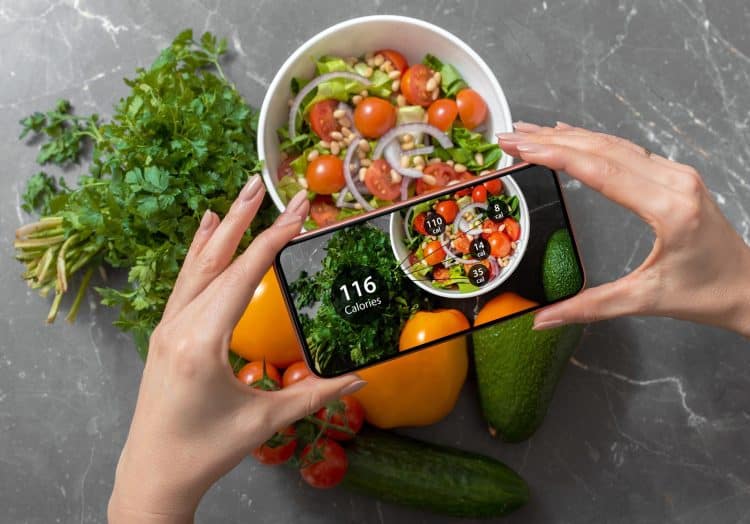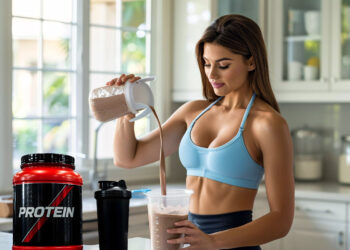If you lift weights to improve your aesthetics, you’ll want to shed body fat at some point because no one is born with six-pack abs and chiseled pecs. We’ll use this opportunity to crush a long-standing myth — there is no such thing as a permabulk for a bodybuilder. You’ll have to lose body weight to let your muscles shine.
Confused about macros for cutting? Don’t worry; we have got you covered. This article covers everything you need to know about getting paper-thin skin.
Understanding Macros and Cutting
Macronutrients, popularly known as macros, are the nutrients your body needs in large quantities for optimal functioning. Given below are the three macronutrients and their overly-simplified functions:
- Protein: helps build and repair muscle
- Carbs: gives you energy
- Fats: keeps you satiated
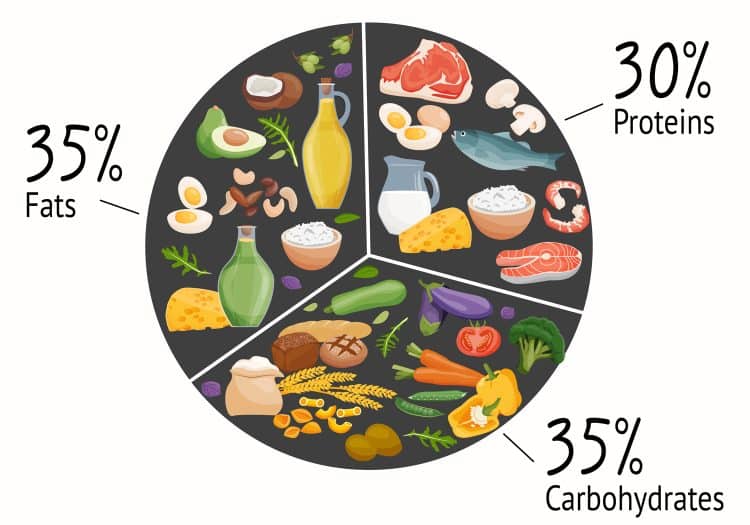
Depending on the time of the year and their immediate goal, a bodybuilder can switch between a cutting, gaining, and maintenance diet, also known as phases. Here’s a brief overview of each:
- Cutting Phase: Also known as the shredding phase, it involves staying in a calorie deficit. The goal here is to shed body weight and lose fat.
- Gaining Phase: Also known as the bulking phase, it requires you to maintain a calorie surplus. Building muscle mass and strength are the primary goals.
- Maintenance Phase: Once an athlete has achieved their goal weight, they switch to the maintenance phase, which requires them to adjust their calorie intake to sustain their conditioning.
Calories vs. Macros
Many people are often confused about calculating their daily calorie intake goal. Ask them to balance the macro split with it, and you’ll see them throw up their arms in despair.
Let us help you demystify calories and macronutrients.
Level Up Your Fitness: Join our 💪 strong community in Fitness Volt Newsletter. Get daily inspiration, expert-backed workouts, nutrition tips, the latest in strength sports, and the support you need to reach your goals. Subscribe for free!
A calorie is a unit of energy. It denotes the energy your body needs to survive and function each day. You can consume calories through food and beverages.
On the other hand, the three macronutrients — protein, carbs, and fats — contain calories that help meet your daily calorific needs. You must maintain a healthy balance between the three macros to build and maintain a chiseled physique. Here is the breakdown of the calories in each gram of the three macronutrients:
- 4 calories in 1g of protein
- 4 calories in 1g of carbohydrates
- 9 calories in 1g of fat
How to Calculate Macros For Cutting: Detailed Steps
Now that you know the basics of calories and macros, it is time to ascertain the calories and macros for cutting. Although each of us will have different caloric needs — as no two people have the same body type, routine, or metabolic rate, the process to ascertain the required calorie and macro ratios remains the same for everyone.
So, without any further ado, this is how to find your optimal calorie and macro balance:
1. Daily Required Calories
Determining your daily calorie goal is the most critical step in the diet planning phase. No matter how accurate you are with your macro calculations, you’ll never see the desired results if you mess up your calories.
There are two ways of determining your daily caloric goals:
Method 1: Find Your TDEE
You ought to find your total daily energy expenditure (TDEE) to kick off your nutrition program planning. TDEE is the total energy a person uses in a day. Usually, TDEE is estimated using factors such as a person’s basal metabolic rate (BMR), activity level, and the thermic effect of food.
Here is an intro on each of the factors:
- BMR: The minimum energy needed to maintain a person’s vital organs.
- Activity Level: Denotes an individual’s daily activity level, including exercise.
- Food’s Thermic Effect: The amount of energy required by the body to process and use food.
Steps to Calculate TDEE
BMR, activity level, and thermic effect of food are used to calculate your TDEE. Here is how to calculate your TDEE:
- The calculations begin with determining your BMR. The three most popular methods to calculate BMR include the Mifflin St-Jeor Equation, Harris-Benedict equation, and Katch-McArdle Formula.
- Once BMR is calculated, multiply it by an activity level factor, which is based on factors such as exercise and whether a person has a sedentary or very active job.
- Although food’s thermic effect can be factored into the TDEE, it is rarely used as it has a relatively small impact on the TDEE.
Best Way to Determine Your TDEE
Calculating your TDEE manually can be boring and cumbersome. Instead, use our accurate online TDEE calculator to determine your average daily required calories. The TDEE calculator will tell you your maintenance calories and macronutrient breakup for the cutting, bulking, and maintenance phases.
Check Out: What is TDEE?
Method 2: Track Your Food Intake For a Couple of Weeks
This is the more hands-on approach for calculating your ideal calorie intake.
Although the TDEE calculator will give you a fair idea of the calories you should be consuming in a day, you might have to make some adjustments after trying your new diet for a few weeks. This is because the TDEE figure you get from a calculator is not personalized for your lifestyle and metabolic rate.
However, there is a more efficient way of calculating your TDEE. Use a calorie-tracking app like MyFitnessPal for a couple of weeks to log your meals. Average your daily caloric intake for the period. This will be your TDEE.
Cutting Calories
Now that you know your average daily caloric intake, you need to cut your calories and remain in a calorie deficit as long as you want to shed weight and lose the spare tire.
Research has found that about 3,500 calories equal 1 pound (0.45 kilogram) of fat. Per this data, experts believe burning or cutting 500 calories a day can help lose 1 pound of body weight a week. However, your ultimate weight loss results will depend on your metabolic rate, gender, and activity level. [1]
Once you have the calories figured out, it’s time to move on to the macronutrients.
2. Protein Requirement
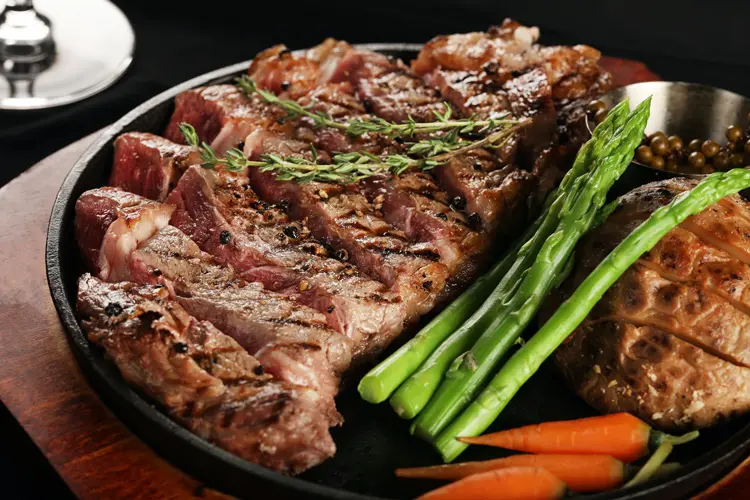
Experts recommend sticking to a high-protein diet in the shredding phase due to the following reasons:
- A high-protein diet can help lose fat and build muscle mass. [2]
- Protein-rich foods keep you satiated for longer, which can be a blessing in disguise while running a calorie deficit. [3]
- High-protein foods spike your metabolic rate as they require the most energy of the three macronutrients to break down.
According to research, you should consume a gram of protein per pound of body weight if your goal is to build muscle mass. Consuming more than this greatly diminishes its effects. [4]
Depending on your muscle-building goals, you should get between 30-50 percent of your daily calorie requirements from protein. Here is a simple calculation for a person with a 2,000 calories per day goal:
- 2,000 calories per day x 50% protein ratio = 1,000 calories from protein daily
- 1,000 calories / 4 calories per gram of protein = 250 grams of protein daily
Thus, a lifter who wants to pack on muscle mass while losing weight should consume 250g of protein while following a 2,000-calorie-per-day diet. Use our Protein Intake Calculator to find your daily protein intake.
Check Out: The 10 Best Low-Calorie Protein Powders Reviewed
3. Fat Requirement
While on a fat loss program, many people make the mistake of considering fats as their archnemesis. However, cutting out this essential macronutrient from your diet can disrupt your daily functioning.
Depending on your weight loss goal, you should consume between 15-40 percent of your calories from fat.
Use the same calculation used to check your daily protein requirement to determine your daily fat goals.
Level Up Your Fitness: Join our 💪 strong community in Fitness Volt Newsletter. Get daily inspiration, expert-backed workouts, nutrition tips, the latest in strength sports, and the support you need to reach your goals. Subscribe for free!
4. Carb Requirement
Calculating your daily carb requirement is relatively straightforward. Divide the remaining calories by four grams to get your daily carb target. For example:
- Calorie goal: 2,000kcal
- Protein target (50%): 1,000/4 = 250g
- Fat target (20%): 400/9 = 44g
- Daily carb target: 600/4 = 150g
Remember, you might have to tweak your macro intake to adjust for intense workouts. This is known as carb cycling. You’ll be ramping up your carb intake on days you hit the gym or feel drained.
Sample Macros For Cutting Meal
Check out the sample meal below based on the 50 percent protein, 30 percent carb, and 20 percent fat breakdown:
- 100g chicken breast
- 55g brown rice
- 150g stir-fried cauliflower in 15g oil
Prerequisites For a Successful Cut
Having the following things in order before starting your shredding program will make your life easier:
1. Experience
Calculating your calories and macros requires some level of expertise. You shouldn’t expect to see results immediately after adjusting your macros for cutting.
If you are a newbie, you could save time, money, and frustration by hiring a coach with a proven track record. The cutting and gaining processes become relatively easy after you do them a few times.
2. An Effective Cardio Program
Although not necessary, adding cardio to your cutting program can speed up your progress. Cardiovascular training can help create a caloric deficit by helping you burn additional calories.
We recommend adding 15 minutes of HIIT (high-intensity interval training) and 30 minutes of LISS (low-intensity steady state) cardio session to your workout regimen for optimal fat loss progress.
Related: HIIT vs. LISS Cardio: Which One Is Best for Fitness and Fat Loss?
3. Adaptability
Shedding excess weight and losing body fat can require you to make multiple adjustments in your diet and training program before you see the needle budge in the right direction.
Also, people that copy a generic cutting program are doomed to fail. Your shredding plan will be unique to you. What works for your training partner might not work for you.
4. Patience
The weight loss process can be long, tiring, boring, and exhausting. It might take months of dieting before you see favorable changes in your body. You need to believe in yourself and the process. Be patient, keep yourself focused, and results will follow.
Macros For Cutting: Tracking Progress
Tracking your progress can help ensure you’re headed in the right direction and are making steady improvements.
Here are the methods you could use:
1. Step on the scale
Weighing yourself every week is a tried and true way of tracking your fat loss progress. Make sure you weigh yourself in a fasted state at the same time every week and while wearing the same clothes (if at all).
2. Take pictures
Progress pictures are one of the best ways to track your progression. Use the quarter-turn bodybuilding pose to get clicked. Sometimes you’ll start seeing progress in photos before it shows up on the weight scale.
3. Measure your body fat
You could use skinfold calipers to measure the thickness of your subcutaneous fat — the fat underneath your skin. Smart scales are also emerging as a popular way of taking body composition stats.
4. Other methods
Tracking your BMI, waist circumference, and waist-hip ratio are other credible ways of tracking your fat loss progress.
Take new measurements weekly to ensure you’re on the right track. Weekly tracking can save you from spending valuable time following an ineffective program.
You could also share these progress stats with your coach, friends, and family to keep yourself accountable.
Best Macro Food Options for Cutting
By now, we hope you have understood that you need to be in a calorie deficit to lose fat. However, not all calories are the same. Calories from different food sources impact your satiety, metabolic rate, and hormonal responses differently. [5]
Here are the best macro food sources for meeting your daily caloric requirements:
Protein Sources:
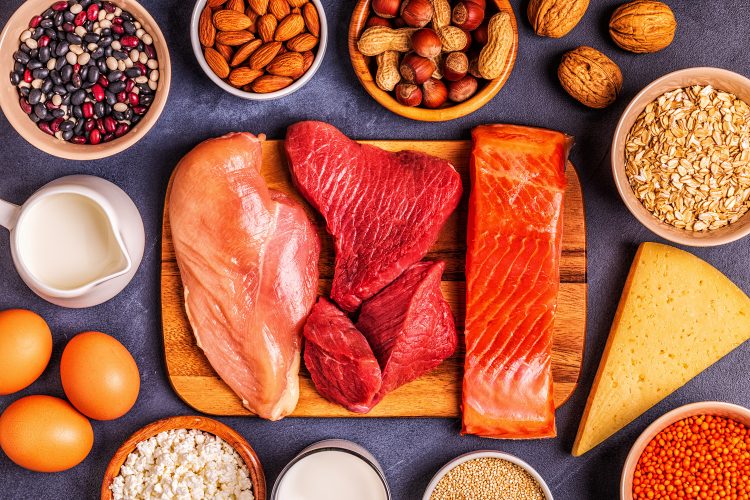
- Milk and dairy products (milk, yogurt, cheese, cottage cheese, quark, casein- and whey protein powder)
- Eggs
- Red meat (beef, pork, lamb, game, ostrich)
- White meat (chicken, turkey)
- Fish and seafood
- Soy-based foods (tofu, tempeh, edamame, soy protein powder)
- Quinoa
- Beans, lentils
- Nuts, almonds, seeds
Fat sources:
- Fatty fish (salmon, herring, albacore tuna, anchovies, sardines)
- Avocados
- Nuts, almonds, seeds
- Peanuts and peanut butter
- Olive oil
- Whole eggs
Carbohydrate sources:
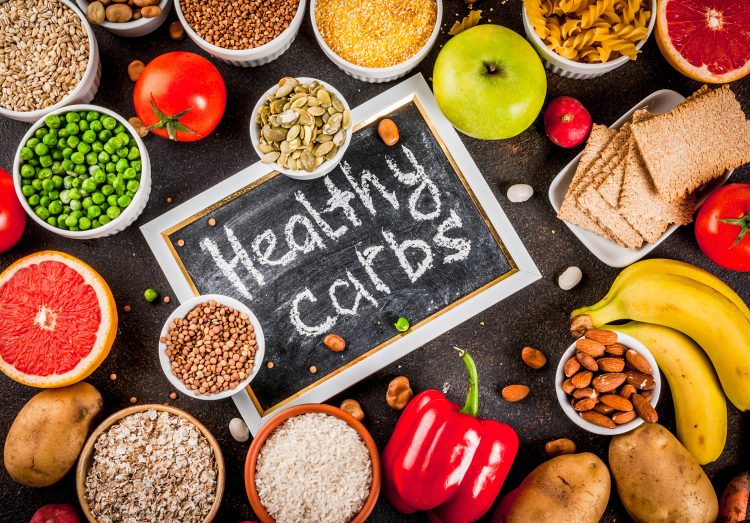
- Bread
- Pasta
- Grains
- Rice
- Potatoes, both regular and sweet potatoes
- Bulgur
- Quinoa
- Beans
- Lentils
- Fruits
- Berries
- Vegetables
Meal Prep Tips To Hit Your Macros For Cutting
Knowing your calories, macro split, and what to eat is only half the battle. You need to nail your meal prep to optimize your fat loss progress and get in the best shape of your life.
1. Choose the Right Number of Meals
There is no hard and fast rule for the number of meals you should eat daily on a weight loss program. While some people recommend having up to six small meals at regular intervals throughout the day, others recommend ketogenic diets and intermittent fasting for optimal weight loss progress. Try different approaches and settle on what works best for you.
2. Plan Your Meals in Advance
It almost feels like Benjamin Franklin was talking about meal prep when he said, “By failing to plan, you are preparing to fail.” You cannot expect yourself to stick to a diet plan if you have a busy schedule and cook meals on the fly.
Use your day off from work to prepare your meals in advance. It will save you the anxiety of buying groceries and preparing meals daily as per your macros for cutting.
3. Always Choose Healthy Food Alternatives
You should get in the habit of reading food labels before making a purchase. Making small adjustments like buying a protein chocolate bar with a better macronutrient ratio can add up in the long run.
4. Stay Hydrated
Water is often overlooked in a shredding program. It not only helps you stay alive by transporting blood, nutrients, and oxygen to all parts of your body, but it can also help calm your hunger pangs. Drink at least a gallon of water every day.
Frequently Asked Questions
How to calculate macros for cutting?
You could use our TDEE or macronutrient calculators to determine the most optimal macro breakdown for your age, height, activity level, and gender.
What should my macros be for cutting?
There is no one-fits-all macro program. A macronutrient breakup that works for you might not work for someone else. Follow the 50:30:20 protein, carbs, and fat breakdown mentioned in this article and tweak it until you see favorable results.
Do I need to count my calories every day?
No. However, you should track your calories for at least a couple of weeks before setting a new calorie and macro goal for yourself. Follow the same practice for a few more weeks by logging your meals in a calorie-tracking app after starting your new diet to ensure you’re headed on the right path.
Do I need to do cardio on a cutting diet to shed body weight?
Although a cardio routine is not compulsory in a weight loss program, it can help speed up your progress. We recommend doing a 15-minute HIIT and 30-minute LISS cardio workout daily.
Wrapping Up
Calculating your macros for cutting can be intimidating, exciting, and challenging at the same time. However, you should be thoughtful about your calorie consumption and shouldn’t make drastic changes from the get-go.
Ease into a shredding program by determining your average daily calorie consumption and then deducting 500 calories. Follow this calorie deficit for at least a couple of weeks before making adjustments. Best of luck!
References
- Webb, Densie, PhD, RD. Farewell to the 3,500-Calorie Rule Today’s Dietitian Vol. 26 No. 11 P. 36. November 2014
- Mettler S, Mitchell N, Tipton KD. Increased protein intake reduces lean body mass loss during weight loss in athletes. Med Sci Sports Exerc. 2010 Feb;42(2):326-37. doi: 10.1249/MSS.0b013e3181b2ef8e. PMID: 19927027.
- Line Q. Bendtsen, Janne K. Lorenzen, Nathalie T. Bendsen, Charlotte Rasmussen, Arne Astrup, Effect of Dairy Proteins on Appetite, Energy Expenditure, Body Weight, and Composition: a Review of the Evidence from Controlled Clinical Trials, Advances in Nutrition, Volume 4, Issue 4, July 2013, Pages 418–438, https://doi.org/10.3945/an.113.003723
- Stokes T, Hector AJ, Morton RW, McGlory C, Phillips SM. Recent Perspectives Regarding the Role of Dietary Protein for the Promotion of Muscle Hypertrophy with Resistance Exercise Training. Nutrients. 2018 Feb 7;10(2):180. doi: 10.3390/nu10020180. PMID: 29414855; PMCID: PMC5852756.
- Swinburn BA, Sacks G, Hall KD, McPherson K, Finegood DT, Moodie ML, Gortmaker SL. The global obesity pandemic: shaped by global drivers and local environments. Lancet. 2011 Aug 27;378(9793):804-14. doi: 10.1016/S0140-6736(11)60813-1. PMID: 21872749.

